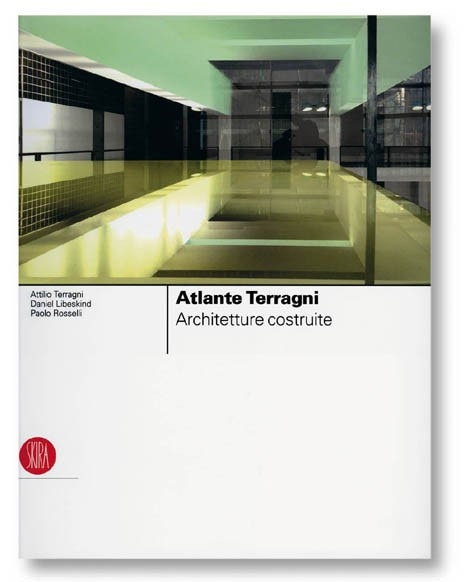Atlante Terragni. Architetture costruite, Attilio Terragni, Daniel Libeskind, Paolo Rosselli Skira, Ginevra-Milano 2004 (pp. 424, € 75,00)
All works are collective works, wrote Enzo Melandri. And this book also has more authors than are declared on its cover, above all Giuseppe Terragni as it contains many previously unpublished writings drawn from project reports and letters. This atlas of constructed architecture is, however, principally a photographic book based on a close comparison between period pictures taken by Ico Parisi and Terragni and contemporary photographs quite rightly taken in colour by Paolo Rosselli, who should therefore be considered the main author of the book. Like Gabriele Basilico, Rosselli is a trained architect and, significantly, when very young he frequented Ugo Mulas’s Milan studio. A fresh photographic campaign was overdue in Terragni’s case and not just because buildings and their context change over time, as does the way people see them. Paradoxically and despite the universal success of much of his architecture, until the time of his centenary in 2004, it had only been backed up by black-and-white period pictures, thereby fostering the false myth of candid and totally abstract architecture.
This historiographic myth was created by many, and not least by Peter Eisenman. In his scattered writings and in the other large book published for the centenary, Giuseppe Terragni: Transformations, Decompositions, Critiques (The Monacelli Press, New York 2003) Eisenman has always used strictly black-and-white illustrations to underline the conceptual aspect that has always been central to his studies. Paolo Rosselli’s photographs definitively shatter this myth (which had already been partially exploded by Giorgio Ciucci) by reproducing the unchanged variety of colours and materials in nearly all the architecture constructed by Terragni. Suffice to compare the different pictures on pages 222 and 223: the famous period photograph of the Novocomum (1929) seen from the west side and the similar but new picture showing all the traces of colour that survived the sloppy postwar restoration of the windows and interiors. Even the Casa del Fascio once again reveals the pale colours of its rolling shutters, its concrete and glass walls and its polished Botticino marble staircases, although here more than elsewhere a crucial role is played by the often overlapping reflections that literally open the building towards the exterior. Another surprise is the photograph showing how Terragni seems almost to have played with a concrete and glass wall in Casa Rustici (1933-36), in Milan, using pieces of glass that span all the shades of blue from turquoise to cobalt (p. 35). By contrast, the material substance of Casa del Fascio in Lissone is highlighted, along with the use of at least five different types of stone to differentiate the parts of the building – the dark Fascist tower, the pale lateral facade, etc. The same applies to the Monument to the Fallen of World War I in Como, where you immediately notice the marine fossils in the Aurisina stone extracted from Carso, where the fallen to whom the monument is dedicated lie. Similarly striking is the closely woven cladding on Casa Giuliani Frigerio, usually so difficult to photograph, and the coarser leached stone of the monument to Roberto Sarfatti on the Asiago plateau. All this was made possible by a conscious decision by Paolo Rosselli, who set aside the wide-angle lens normally over-indulged by photographers of architecture and concentrated on close-ups, as he himself admits, “The meaning of the photograph is entrusted to objects, arranged and almost compressed into 3-10 metres.”
In Rosselli’s brief final text, which we recommend to readers far more than Daniel Libeskind’s one of circumstance, he also writes, “As we all know, observation is not an artless act,” and it is even less so when, as in this case, architecture and photography interact. “The photograph looks at, thinks about and translates the architecture; as a result, when seen, this starts to change.” This is precisely the meaning of the operation orchestrated by Attilio Terragni and executed by Rosselli: to wrench the architecture of the Como master from stereotypes built up over a century and formulate new analyses (Mulas would call them verifications) to fully understand it. But understanding is translation. In other words, it is a perspective that invites us to renew our perception of Giuseppe Terragni, or rather, to paraphrase Luciano Berio, to reinvent its meaning, to accept the idea of a history that searches us and allows us to keep rediscovering a memory in the future.
Manuel Orazi Architectural historian


